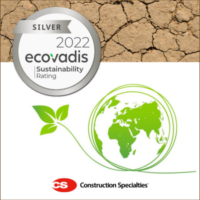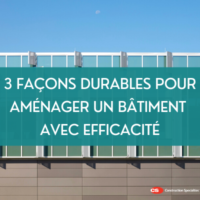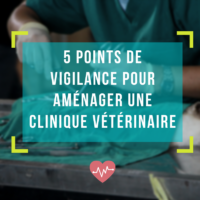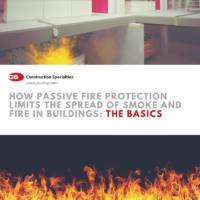CS RS-5605 Performance Louvre Wins AIRAH Product of the Year 2023
Construction Specialties were proudly awarded AIRAH Product of the Year 2023 for our RS-5605 high performance louvre.
Wall protection | Expansion joint covers | Entrance matting
 As part of the EcoVadis certification process, Maud, our QHSE Project Manager, shares her experience, her commitment and the challenges she faced along the way. She provides a valuable insight into what she has learned from the experience, offering useful advice to those seeking certification with EcoVadis
As part of the EcoVadis certification process, Maud, our QHSE Project Manager, shares her experience, her commitment and the challenges she faced along the way. She provides a valuable insight into what she has learned from the experience, offering useful advice to those seeking certification with EcoVadis In architecture, natural light is an integral part of building design, a source of creativity, and, above all, brings real added value, thanks to its effect on its users' comfort, health and mood. These qualities are all the more popular in buildings for living and places devoted to human activity such as educational buildings.
In architecture, natural light is an integral part of building design, a source of creativity, and, above all, brings real added value, thanks to its effect on its users' comfort, health and mood. These qualities are all the more popular in buildings for living and places devoted to human activity such as educational buildings. Schools, Technical Campuses and Universities can be very tough environments to maintain and keep looking fresh, with busy student areas often being subjected to extensive wear and tear, resulting in scruffy interiors and high maintenance costs.To help you keep on top of your education building maintenance budgets, we have focused on the four main areas of your school, which once fully protected, should make a real difference in your cleaning and maintenance spend.
Schools, Technical Campuses and Universities can be very tough environments to maintain and keep looking fresh, with busy student areas often being subjected to extensive wear and tear, resulting in scruffy interiors and high maintenance costs.To help you keep on top of your education building maintenance budgets, we have focused on the four main areas of your school, which once fully protected, should make a real difference in your cleaning and maintenance spend. Improving the life cycle of wall finishes with Acrovyn® or limit the need for air conditioning in a building by regulating heat with Airfoil® and welcoming people into a clean environment and limit floor erosion with Pedisystems® welcome mats. We explain to you how to implement these sustainable solutions in a building.
Improving the life cycle of wall finishes with Acrovyn® or limit the need for air conditioning in a building by regulating heat with Airfoil® and welcoming people into a clean environment and limit floor erosion with Pedisystems® welcome mats. We explain to you how to implement these sustainable solutions in a building. Like traditional medical and hospital care, medical structures specialising in veterinary care require the application of the same strict hygiene protocols and the same codes of ethics. Providing a healthy environment at all times is essential and the result of continuous work. For this reason, the interior design must be studied according to the constraints encountered. And it is not so easy to keep a clean environment when patients are furry and feathered.....
Like traditional medical and hospital care, medical structures specialising in veterinary care require the application of the same strict hygiene protocols and the same codes of ethics. Providing a healthy environment at all times is essential and the result of continuous work. For this reason, the interior design must be studied according to the constraints encountered. And it is not so easy to keep a clean environment when patients are furry and feathered..... Entre la profusion de solutions et les multiples interprétations des textes de loi, quelles sont les solutions d’accessibilité conformes au regard de la loi handicap ? Et pour quels type d’ERP sont-elles obligatoires ? Nous y répondons dans un dossier étayé par le représentant accessibilité du département de l'Eure.
Entre la profusion de solutions et les multiples interprétations des textes de loi, quelles sont les solutions d’accessibilité conformes au regard de la loi handicap ? Et pour quels type d’ERP sont-elles obligatoires ? Nous y répondons dans un dossier étayé par le représentant accessibilité du département de l'Eure. This article looks at one of the key interior design considerations for the visually impaired, colour contrast. Examining how the visually impaired move about a building, and discussing the legislative requirements for colour contrast and light reflectance, we showcase example colour options & offer recommendations.
This article looks at one of the key interior design considerations for the visually impaired, colour contrast. Examining how the visually impaired move about a building, and discussing the legislative requirements for colour contrast and light reflectance, we showcase example colour options & offer recommendations. Passive fire protection (PFP) attempts to contain fires or slow the spread. Passive Fire Protection takes many forms, from fire-resistant walls, floors, and doors to expansion joint fire barriers, sprinklers and fire alarms. Discover the legislation behind the use of these products and their benefits.
Passive fire protection (PFP) attempts to contain fires or slow the spread. Passive Fire Protection takes many forms, from fire-resistant walls, floors, and doors to expansion joint fire barriers, sprinklers and fire alarms. Discover the legislation behind the use of these products and their benefits. Construction Specialties is proud to be participating in Ideaction, Australia’s premier national Facility Management learning and networking event, incorporating a world-class conference and exhibition. The team will be showcasing key products and sharing useful insights from recent projects. Why not join us?
Construction Specialties is proud to be participating in Ideaction, Australia’s premier national Facility Management learning and networking event, incorporating a world-class conference and exhibition. The team will be showcasing key products and sharing useful insights from recent projects. Why not join us?This website uses cookies to help us give you the best experience when you visit our website. By continuing to use this website, you consent to our use of these cookies. Find out more about how we use cookies and how to manage them below in our privacy policy.
Privacy Policy